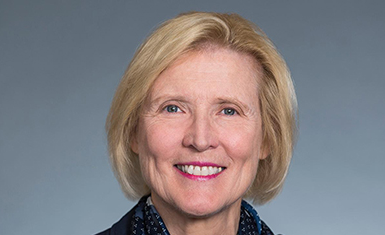How diverse is business ownership in Canada – does it reflect the nation’s population?
 Peter Josty is Executive Director of The Centre for Innovation Studies in Calgary.
Peter Josty is Executive Director of The Centre for Innovation Studies in Calgary.
A recent report from Statistics Canada has interesting information on who owns businesses in Canada, including the distribution of businesses for certain diversity population groups and business demography statistics.
There were 6,244,080 businesses in Canada in 2023, of which 5,111,180 (82 percent) were sole practitioners, leaving 1,132,900 businesses with employees. Let’s focus on that group.
Of the businesses with employees, most (1,119,900) were small businesses, having 1-99 employees.
10,800 were medium-sized businesses with 100-499 employees, and 2,200 were large businesses with more than 500 employees.
The largest number of businesses in Canada are in: real estate rental and leasing; professional, scientific and technical services; and construction.
Percentage of businesses owned by immigrants
Twenty-three percent of Canadians were born outside Canada, and they own 26.3 percent of the businesses. So they are slightly overrepresented in business ownership.
However, that is skewed towards small businesses. Immigrants own only eight percent of the medium-sized businesses and seven percent of large businesses in Canada.
There is also a breakdown by how long an immigrant has been in Canada. As one might expect, immigrants who have been in Canada for less than five years own far fewer businesses – only two percent of the total.
There is an interesting pattern for ownership of large companies. Immigrants who have been in Canada less than 10 years own 0.5 percent of the large companies. But those who have been here more than 10 years own seven percent of the large companies.
Statistics Canada’s data does not probe into second- or third-generation immigrants.
Previous work from the Global Entrepreneurship Monitor has shown that first-generation immigrants (who were born outside Canada) have a slightly higher rate of entrepreneurship than the general population (consistent with the StatsCan data).
However, second-generation immigrants (whose parents were born outside Canada) have a significantly lower rate, because their parents want them to be doctors or lawyers or accountants, who are typically not entrepreneurs.
The largest number of immigrant-owned businesses fall into the following North American Industry Classification System (NAICS) codes: real estate, rental and leasing; transportation and warehousing; and professional scientific and technical services.
Men overrepresented and women underrepresented in business ownership
Men represent 49.7 percent of the Canadian population and own 72% of the businesses, so they are heavily overrepresented.
Women are 50.3 percent of the population and own 28 percent of the businesses, so they are heavily underrepresented.
As one might expect from this breakdown, men also own a disproportionate number of the large businesses – 80 percent of the total.
The largest number of businesses owned by women fall into the following NAICS codes: real estate renting and leasing; professional scientific and technical services; and health care and social assistance.
Business ownership by visible minorities reflects population percentage
Visible minorities represent 26.5 percent of the population and own 26 percent of the businesses. So their ownership is closely aligned with their share of the population.
StatsCan breaks visible minorities into several groups: South Asian (who own 10.6 percent of the businesses); Chinese (who own 6.1 percent), Black (who own 1.5 percent) and Filipino (who own 0.8 percent).
The largest number of businesses owned by visible minorities fall into the following NAICS codes: real estate renting and leasing; professional scientific and technical services; and construction.
Indigenous people are underrepresented in business ownership
Indigenous people represent about five percent of the population and own 1.9 percent of the businesses, so they are underrepresented in business ownership. Most Indigenous businesses are in Ontario, Quebec, British Columbia and Alberta.
The largest number of businesses owned by Indigenous people fall into the following NAICS codes: real estate rental and leasing; professional scientific and technical services; and construction.
When does business ownership peak by age?
Business ownership peaks in the 50-64 age group, as shown in the table below.
Age | Percent of businesses owned |
Less than 30 | 3 |
30-39 | 16 |
40-49 | 24 |
50-64 | 39 |
65 and older | 17 |
The largest number of businesses owned by people aged less than 30 fall into the following NAICS codes: transportation and warehousing; real estate rental and leasing; and professional scientific and technical services.
Conclusion
Of the four categories examined, two (immigrants and visible minorities) own the number of businesses roughly proportional to their share of the population.
The other two categories (gender and Indigenous background) are heavily skewed, with women and Indigenous people owning far fewer businesses than their share of population. The summary is shown below.
| Percent of population | Percent of businesses |
Men | 49.7 | 72 |
Women | 50.3 | 28 |
Indigenous people | 5 | 1.9 |
Immigrants | 23 | 26.3 |
Visible minorities | 26.5 | 26 |
StatsCan’s analysis clearly shows where further government and other types of assistance relating to business ownership for population groups needs to be focused, if the goal is to align business ownership with the makeup of Canada’s population.
R$
| Organizations: | |
| People: | |
| Topics: |
Events For Leaders in
Science, Tech, Innovation, and Policy
Discuss and learn from those in the know at our virtual and in-person events.
See Upcoming Events
You have 0 free articles remaining.
Don't miss out - start your free trial today.
Start your FREE trial Already a member? Log in
By using this website, you agree to our use of cookies. We use cookies to provide you with a great experience and to help our website run effectively in accordance with our Privacy Policy and Terms of Service.





